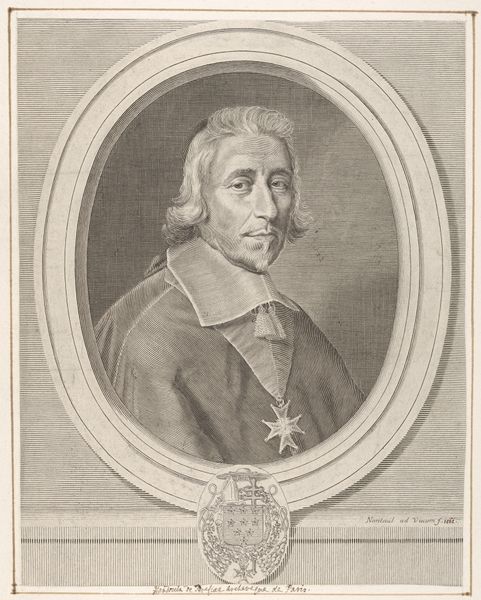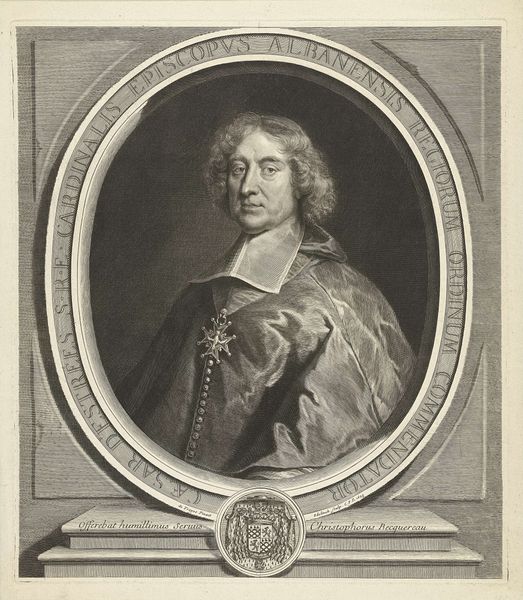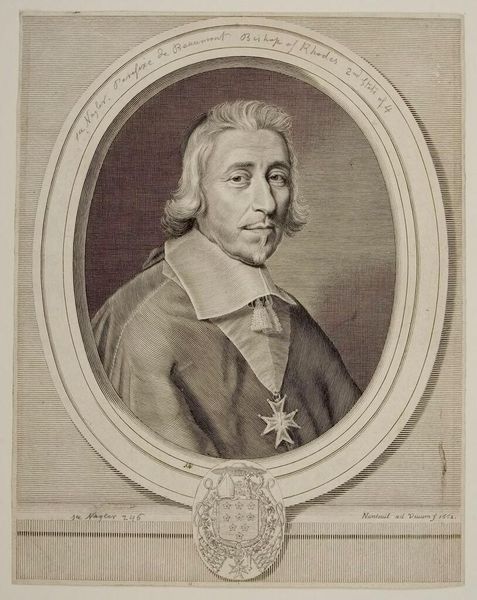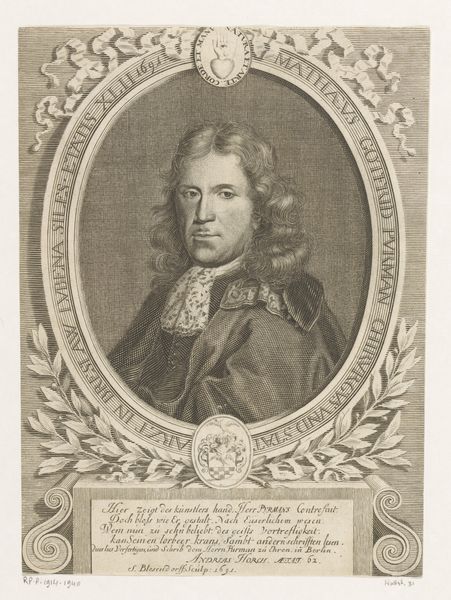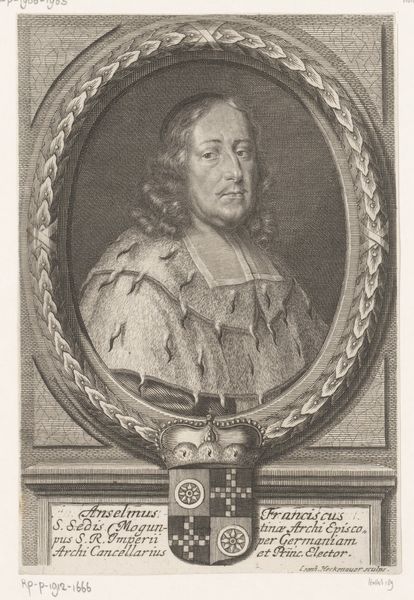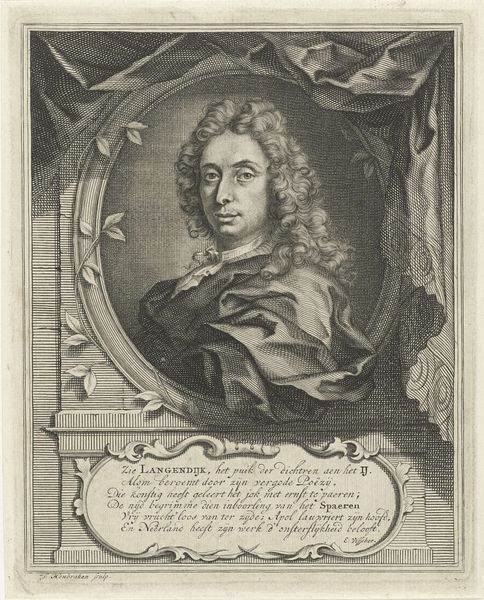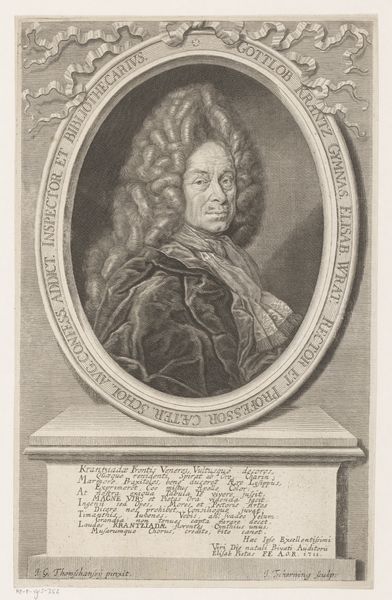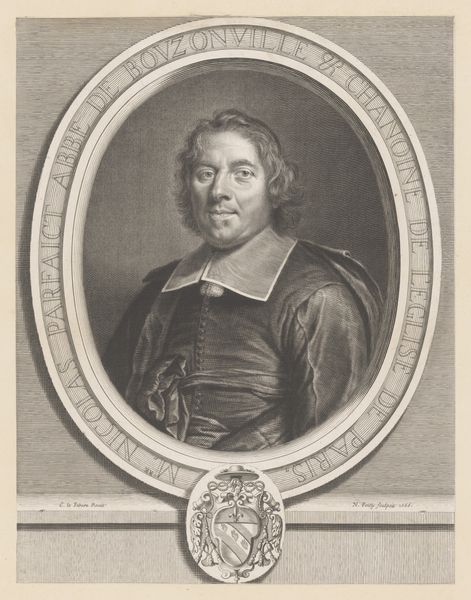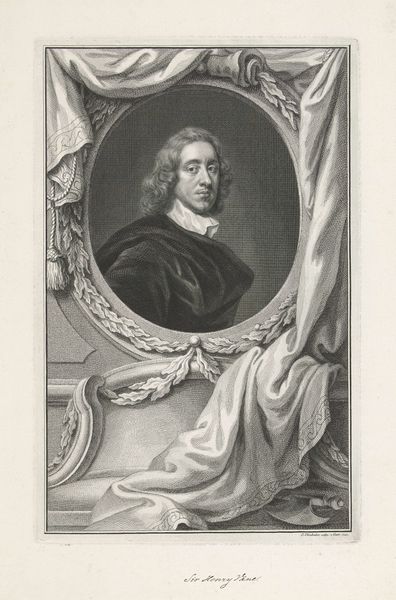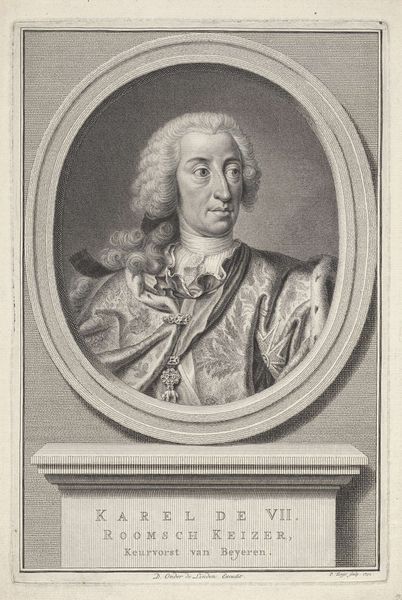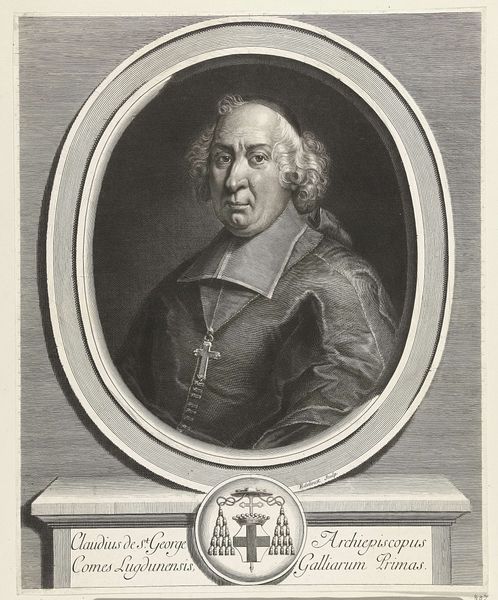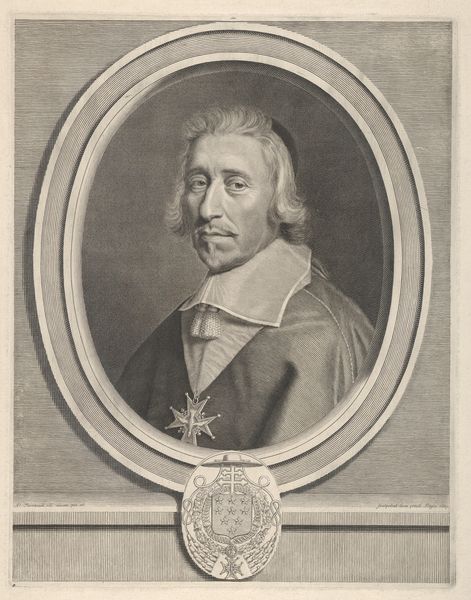
Portret van de Parijse aartsbisschop Hardouin de Péréfixe de Beaumont 1667
0:00
0:00
pietervanschuppen
Rijksmuseum
engraving
#
portrait
#
baroque
#
old engraving style
#
history-painting
#
engraving
Dimensions: height 400 mm, width 348 mm
Copyright: Rijks Museum: Open Domain
Editor: Here we have "Portret van de Parijse aartsbisschop Hardouin de Péréfixe de Beaumont," an engraving by Pieter van Schuppen, from 1667. It's quite detailed, and the figure's gaze is really striking. How do you interpret this work? Curator: Notice the elegant balance achieved through the oval frame containing the subject. The composition masterfully guides our gaze across a variety of textures, from the intricate background pattern, which gives a very clear sense of depth to the more plain clothes worn. Editor: So you are looking at the interplay between textures to communicate a message? Curator: Precisely. The texture and detailing enhance our focus on the Bishop's face. It's also interesting how Van Schuppen utilizes line to suggest the form and structure of his subject. It allows light and shadow to provide a feeling of roundness in this engraved format. Editor: I see what you mean, especially regarding how texture affects what captures our attention. What about the details *outside* the portrait? Curator: The carefully considered composition of decorative details around the portrait enhance the balance of light and shadow in the portrait. The eye is also subtly drawn by each inscription, adding textual balance to the design. These choices serve to accentuate the qualities in this well-balanced composition. Editor: That makes a lot of sense. I never really thought about that when it comes to the inscription or surrounding patterns, I was really stuck on reading the man's expression. Thank you! Curator: Indeed, a formal approach can often enrich our viewing experience by exposing subtleties easily missed in the artwork.
Comments
No comments
Be the first to comment and join the conversation on the ultimate creative platform.
